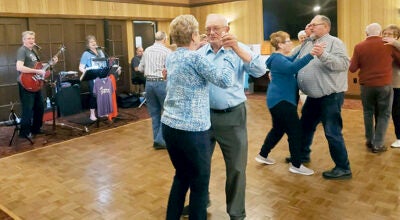Residential construction up this year in Austin
Published 3:00 pm Saturday, June 26, 2010
With a pile of salvaged lumber sitting nearby, Bob Hicks is building.
The Austin resident is working on a deck extension to replace a pool that was damaged during the harsh winter. When all is said and done, the new ramp off of the old deck will circle around a small stream and a fire pit — projects still on Hicks’ to-do list.
It’s not the biggest project ever — Hicks said his goal is to keep the cost at less than $500. To date, he’s spent roughly $25 on some boards for his new walk-bridge, but he mainly intends on re-using old materials, including wood and the damaged pool’s lining.
Hicks is among a number of Austin residents looking at smaller projects these days. Local construction workers say they’ve seen a rise in remodeling and renovation projects, and statistics from the city’s planning office show that residential construction of all kinds — including deck projects like Hicks’, as well as things such as new garages and revamped roofs — is up versus this time last year.
However, the spike in residential construction through the early parts of 2010 is coming on the heels of a three year slump in Austin. Between 2007 and 2009, the average yearly total of residential work in the city was roughly $8.5 million. In the two years before that, the average was $15 million.
That slump, of course, has coincided with the national recession, which has greatly affected the housing industry. Statistics on smaller residential construction projects are not kept at the national level, but data on new home construction clearly reflects the trend.
In fact, economists and realtors look at spring of 2009 as the low point for home construction. Numbers are up roughly 40 percent since then, but they’re still well behind the decade’s peak in 2006.
And the recovery seen in the last year might not last — new home and apartment construction in May was 10 percent behind April, likely in part because a federal tax credit geared toward first-time home buyers expired.
But there is some optimism. The National Association of Home Builders expects housing numbers to be at 80 percent of where they were during peak building years by the end of 2011, and Austin’s strong 2010 should only pick up during the summer construction months.
Said Hicks: “Home construction is always a good sign for the economy. It means there’s expansion.”
Local numbers could bode well
The stronger residential construction numbers so far in 2010 means lot of work for some area contractors.
Dave Anderson, owner of Anderson Construction, said he’s had no shortage of projects.
“It’s actually been really busy this year,” he said.
However, Anderson said he has noticed a shift in the type of work he’s been getting. Several years ago, more people were building new homes. Now, the contractor said, more people are looking at smaller projects, such as kitchen renovations.
“People are doing lots with their existing homes,” Anderson said.
Despite these types of projects, Anderson said his workload isn’t quite as strong as it was during the peak years earlier this decade. Instead, he’s noticed a slightly reduced pace that has remained steady for the past few years.
Joshua Parks, who runs a self-named construction company in Austin, said he too has noticed a shift toward remodeling projects. And, like with Anderson, business has been pretty good to Parks during the downturn.
“To me, it’s getting better every year,” Parks said of his 10-year-old business.
However, he does think the economy has affected the type of projects he’s been getting. The remodels and renovations, Parks said, are probably a result of people being cost-conscious and not wanting to invest in new homes. The contractor said he’s also seen people trying to use insurance dollars for more kinds of projects, rather than spending their own money.
“There probably is a little less money out there,” Parks said.
To Steve Hutchinson, the lack of money in the market has had a much more profound effect. The owner of Hutch and Sons Construction said he’s cut his staff down from between six and eight at a given time to three now — all because of the slumping economy and housing industry.
“It’s been quite a drop-off,” he said. “I don’t have the work like I used to.”
An example is the number of new homes Hutchinson has worked on lately. He said in years past, he’d work on three to four new homes a year. Now, he said, it’s been a few years since he’s done a new home.
Like the other contractors, Hutchinson said smaller projects have taken the place of new homes in his workload. But unlike the others, Hutchinson said this has been far from a one-to-one trade-off. That has meant less overall business, which he likened to the average 9-to-5 worker getting his or her schedule reduced suddenly.
“It’s like going in to work 30 hours a week instead of 40,” Hutchinson said. “Sometimes, it gets stressful.”
But, for now, the Austin resident said he plans to continue plugging along, adding that he likes what he does and he likes working with his sons, who both do projects with him.
“I’m a small business, (and) I rely on my boys a lot,” Hutchinson said.
Tax credit gone … so what now?
On a national scale, the housing market has shown signs of improvement in the past 12 months, but experts hope that more is to come.
Peter Grist, senior economist with the National Association of Home Builders, said a lot of the market’s improvement was due to two federal tax credits enacted within the last two years, the second of which expired in April.
The credits allowed first-time home buyers to get up to $8,000 back on purchases of new or existing homes — an incentive that stimulated the housing market, Grist said.
But with the last tax credit expiring — and with no new credit to replace it — economists like Grist expected the drop in housing numbers that transpired in May. However, Grist said he thinks and hopes that with the economy in better shape, the housing market will be able to sustain some of the tax-credit-influenced growth.
“We’re hoping that now that the economy is starting to pick up, housing demand will continue to grow,” he said.
With that potential growth in mind, Grist said the NAHB is projecting that by the end of 2011, the housing market will be at 80 percent of where it was during the boom years of the early part of the decade.
“The economy is definitely on the track to recovery,” Grist said. “We are hoping that the housing market will follow.”
Tim Walz, the Democratic congressman from Minnesota’s 1st District, said he too noticed a positive impact as a result of the tax credits.
He said one of the big things he saw was people benefiting from the credit by being able to afford improvements on their new homes, doing projects like Hicks’ deck.
But despite the good results, Walz said he’d like to see Congress wait before enacting another costly tax-credit. Instead, he said the government should watch to see if the jump-started housing market can sustain itself.
“Now is the time to wait and see,” the congressman said. “I think (the tax credits) have done a lot to get us on the right path.”
Only time will tell if residential construction is indeed back on the right path, but local contractors and residents like Bob Hicks are certainly trying to make it reality — one small project at a time.
“We could’ve spent a couple hundred bucks and just put dirt in there,” Hicks said, pointing to his in-progress deck, stream and fireplace area. “But this is more fun.”



